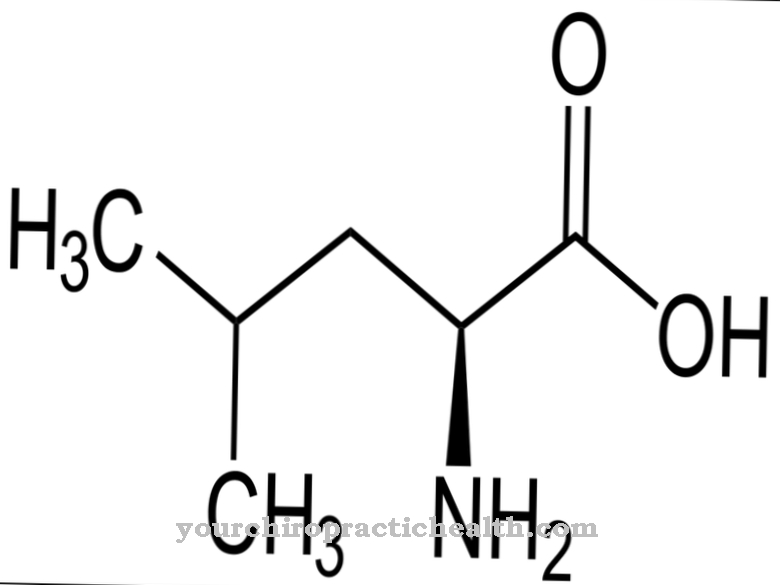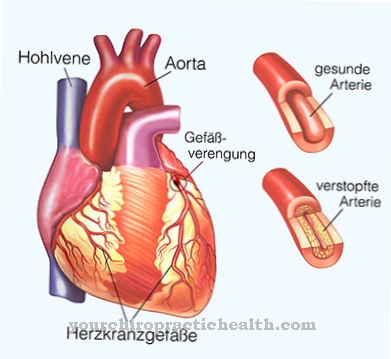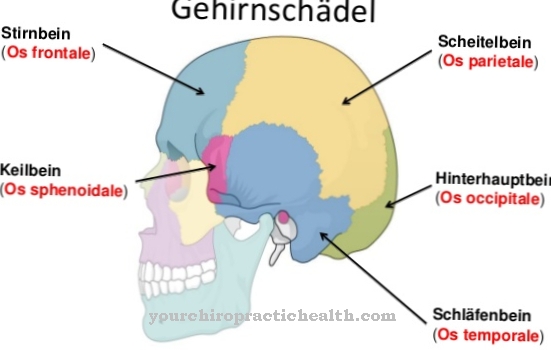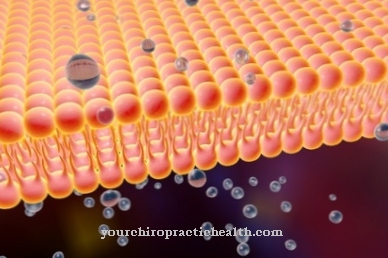With the term cold extremities are especially cold feet and cold legs such as cold hands, fingers and arms meant. Cold feet and hands occur especially in winter and in the cold seasons of autumn and spring. Usually women complain of particularly strong cold extremities, but men can also have so-called Eisbeine, Ice feet, Ice finger or Glacier feet express their grief.
causes

As noted, the main reason for cold feet and hands, fingers and legs is the cold season. The main cause of this occurrence of cold extremities is the cold temperatures and an increased lack of exercise in the entire body.
While you usually exercise a lot in the fresh air, in nature or in the garden in summer, the lack of exercise in winter is often predetermined by the cold and "bad" weather. This then constricts the blood vessels in the feet and hands in order to maintain the warmth on the vital organs. This body's protective mechanism is the result of a complex system of heat regulation.
The purpose of this system is human survival in the cold. The average temperature inside the body is around 36-37 ° C at an air temperature of 20 ° C. The surface temperature of the hands and feet, i.e. the extremities, is between 28 ° C and 33 ° C. Thus, the temperature of the hands and feet is influenced by both the blood circulation and the outside temperature.
This is why these temperatures can fluctuate more than our internal body temperature. Nevertheless, the body tries to balance it out through heat regulation. This heat regulation is measured on the limbs or extremities by so-called thermoreceptors and evaluated in the central nervous system and in the hypothalamus (in the brain).
In the upside-down case, i.e. when it is very hot, the limbs (arms, legs) can cool the entire body due to their large surface area if it should be heated too much. The blood vessels are expanded and the blood supply increased. As the blood travels throughout the body, it then cools other areas as well. This also explains why we not only freeze on our feet with cold extremities, but also on our entire body very quickly.
However, anyone who complains of constantly cold feet or hands even with a lot of exercise and even in summer should have these symptoms examined, as diseases can also be the cause. Mostly these are circulatory disorders and cardiovascular diseases. Less often, the cause is also the mineral deficiency, such as iron deficiency. Another 40 diseases can also be associated with cold extremities. Raynaud's syndrome (attack-like shock cold, mostly on the hands and fingers) should be mentioned here, but it can also occur in connection with other diseases. For example rheumatic diseases like scleroderma, trauma, stress and certain medications.
It is therefore not surprising if older people in particular suffer from cold extremities, because they are often affected by arteriosclerosis (hardening of the arteries). Thus, especially in these patients, the feet and hands are less supplied with blood, which leads to a pronounced feeling of cold. Furthermore, the drive to move is much lower in older people than in young people.
You can find your medication here
➔ Medicines for cold feet and handsDiseases with this symptom
- Mineral deficiency
- Scleroderma
- arteriosclerosis
- Low blood pressure (hypotension)
- Hypothyroidism
- trauma
- Meningitis
- Hypothermia (frostbite)
- Iron deficiency
- Post Traumatic Stress Disorder (PTSD)
- Raynaud's Syndrome
- Diabetes mellitus
Complications
The complications of cold extremities are diverse and depend on the underlying disease or the cause of the cold limb. Overcooling of the extremities, for example in winter, can in extreme cases cause complications such as tissue damage or even necrosis due to frostbite. Timely therapy reduces these risks, but in severe cases there are symptoms such as dying tissue on the limbs even in treated patients.
The cold extremities are also partly caused by a weak heart and the associated circulatory disorders. Missing therapy is dangerous, because the heart's performance usually deteriorates and in the worst case leads to heart failure or a heart attack. If the cold extremities or the underlying heart failure are treated with medication, the loss of performance often progresses.
Here, too, there is a risk of complications such as heart failure and other heart diseases. Cold extremities are often caused by an underactive thyroid, which, if left untreated, can cause serious complications, depending on the severity. Extreme tiredness, headaches and a general feeling of weakness are possible.
Without treatment, not only do the cold extremities persist, but various psychological complaints such as depression are possible. Drug therapy may be accompanied by the opposite symptoms, such as restlessness and agitation. At the same time, in most cases, the cold extremities disappear.
When should you go to the doctor?
Cold extremities are a natural phenomenon and mostly harmless. A doctor's visit is advisable if the hands and feet get cold more often than usual or if the cold attacks persist for a long time. Accompanying symptoms such as dizziness and numbness in the limbs indicate a circulatory disorder, which must be clarified immediately. Feelings of coldness during pregnancy or as part of hormonal changes do not necessarily need to be treated.
However, if the symptoms have a negative effect on general well-being, the symptoms must be discussed with the family doctor so that a suitable treatment can be found. Medical advice should also be sought if diabetes or other illness is suspected. If the extremities suddenly become cold, which are pale and painful at the same time, the emergency doctor must be alerted immediately. It may be an embolism which, if left untreated, can lead to loss of the affected limb or even death. If there are feelings of cold that are accompanied by discoloration and swelling, there may be a venous thrombosis that requires treatment.
Doctors & therapists in your area
Treatment & Therapy
There are several ways to diagnose cold feet and hands. Diagnostics of the nerves, skin and blood vessels are particularly common. Circulatory disorders are a particularly common cause. Thus, vascular diagnostics should always be the focus of every treatment.
Ultrasound and X-rays can provide information about vascular calcification and vasoconstriction. If the suspicion is confirmed, the doctor will perform an angiography. If the cause is more nervous, a further examination by the neurologist is given.
Other underlying diseases that cause cold hands and feet should be treated first. Examples include: diabetes, heart defects, thyroid diseases and low blood pressure.
Hormonal changes, mineral deficiencies, psychological problems, stress, lack of exercise are also, as already noted, causes. Therefore, these causes should be eliminated. In the elderly, severe dehydration often needs to be treated with sufficient fluid intake, because without enough water the blood cannot circulate properly and becomes viscous.
This in turn means that the heat regulation cannot function optimally. Last but not least, smokers and heavy coffee drinkers are quickly susceptible to cold extremes, as nicotine and caffeine have a vasoconstricting effect.
Outlook & forecast
If the extremities are cold, the doctor does not usually need to be treated. In most cases, the cold extremities occur mainly with a cold, flu or other infection and disappear again when the body has overcome the illness. It is advisable to warm or massage the extremities. The increase in warm liquids also helps in this case.
A doctor should be consulted if the cold extremities appear even without illness and, above all, permanently. This could be a circulatory disorder that definitely needs to be examined by a doctor.
If the cold extremities persist, they can cause permanent damage. Since they are mainly caused by insufficient cardiac output, a lack of treatment is very dangerous and in the worst case can lead to a heart attack. In addition to the cold extremities, patients often complain of a general feeling of weakness and a depressed mood. If the heart needs treatment, this treatment usually takes place surgically.
The cold extremities can also be triggered by nicotine and other drugs. In these cases it is advisable to stop the drugs so that the heart can restore proper blood flow.
You can find your medication here
➔ Medicines for cold feet and handsprevention
If you heed all the treatment measures described above, a healthy and active life can provide cozy warmth on and in the limbs. Avoid smoking, fatty foods, little exercise. Drink enough and exercise a lot.Cold and warm alternating baths and saunas have a supportive and preventive effect.
You can do that yourself
If you have cold extremities, you don't have to go to a doctor. The cold extremities are often a side effect of a cold, flu or an infection of the gastrointestinal tract. The symptom itself does not need medical treatment and usually goes away even after the disease has been defeated.
To get rid of the cold extremities, the patient needs to warm up. Bed rest and general relaxation are just as helpful. Drinking tea and soup can also warm up the extremities; of course, warm clothes are also required.
If the cold extremities appear in their normal state even without illness, a doctor should be consulted. This may be a problem with blood flow that needs to be investigated by a doctor. Home treatment should not be given until the cause of the symptom is known. In the case of serious circulatory disorders, treatment with medication takes place.
Exercise or sporting activity can also help against cold extremities. Above all, the extremities themselves have to be moved to stimulate blood flow. Hydrotherapy offers further possibilities to promote blood circulation in the extremities.




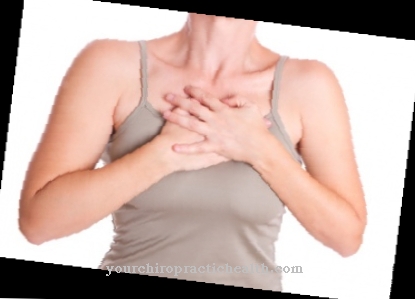



.jpg)



